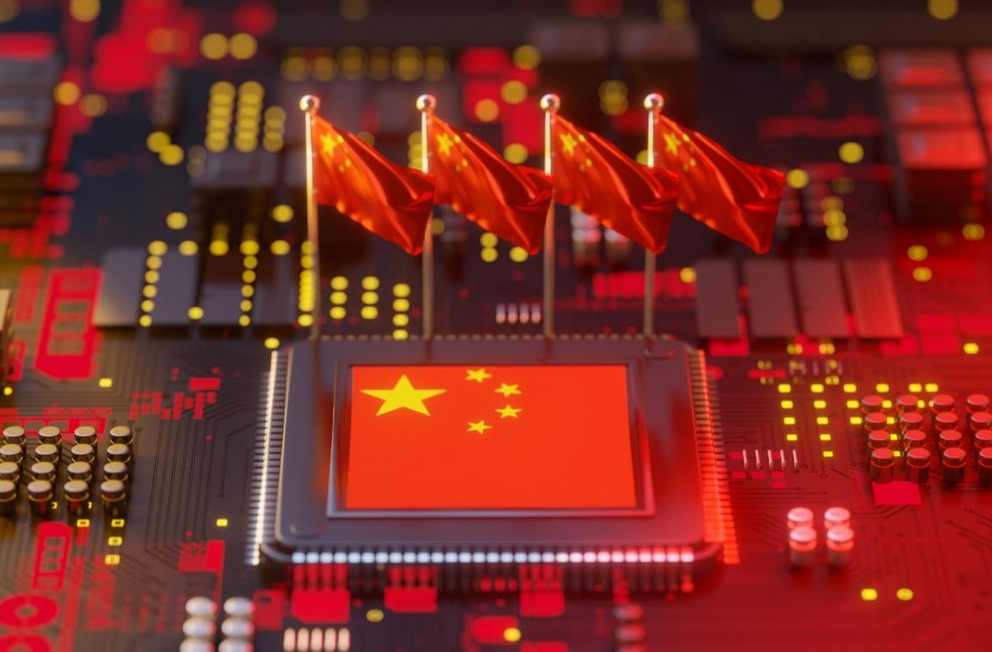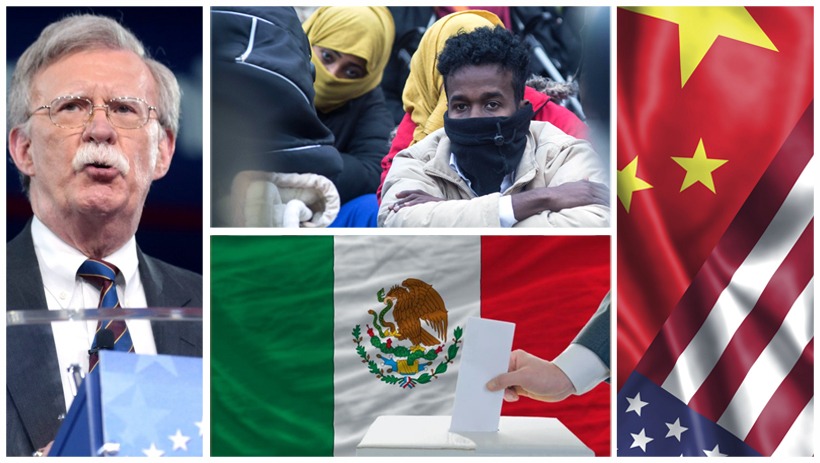Policies and steps regarding technological innovation and AI.
Policies and steps regarding technological innovation and AI.
By Xu Yawen, from Beijing / China
“A policy that causes America to lose half of the world’s AI developers is not beneficial long term, it hurts us more.” These remarks by Jensen Huang the CEO of Nvidia, at the company’s first developer conference in Washington, have garnered widespread attention in the global tech industry.
Nvidia, once held 95% of the Chinese market share, saw its market share drop to zero due to U.S. export controls. Huang’s statement not only highlights the intensifying U.S.-China tech rivalry but also underscores China’s remarkable progress in AI chip development. As Huang himself acknowledged, China is now “nanoseconds behind the U.S.,” marking a significant step toward the forefront of global technological innovation.
From AI chips to 5G, China has steadily charted its course toward technological self-reliance. This journey, however, is not a recent development. Over the decades, China has consistently refined its strategies for technological advancement. From early dependence on foreign expertise to the innovation-driven development plans outlined in its Five-Year Plans, China has increasingly emerged as a global technology powerhouse.

A roadmap for innovation-driven development
China’s technological ascent began in earnest after the founding of the People’s Republic of China in 1949, when the country faced the challenges of a weak industrial and scientific foundation. The 1956 call to “march towards science” marked a pivotal moment in this journey, establishing science and technology as critical pillars of national development.
By the late 20th century, building on the “spring of science” initiated by the 1978 National Science Congress, China’s scientific advancement gained momentum with two key programs: the “863 Plan” (High-tech R&D Plan) launched in 1986 and the “Torch Program” in 1988. The 863 Plan targeted breakthroughs in strategic high-tech sectors vital for national security and economic development, while the Torch Program focused on the commercialization and industrialization of technological achievements. Together, these initiatives laid the foundation for a series of pioneering advancements.
The most transformative period, however, came after the 18th National Congress of the Communist Party of China in 2012, when the government elevated sci-tech innovation to the “core of national development” and made “self-reliance in science and technology” a top strategic priority. This was backed by a surge in R&D investment—rising from 1.02 trillion yuan (162.24 billion) in 2012 to 3.3 trillion yuan (458.5 billion) in 2023—and comprehensive policy support. As a result, China has seen significant breakthroughs across various high-tech sectors. Notable achievements include the world’s fastest supercomputer, Sunway TaihuLight, powered by a fully homegrown processor, as well as landmark milestones in space exploration such as the Chang’e-5 lunar sample-return mission (2020) and the completion of the Tiangong space station (2022).
These successes signal a shift from “following others” to “running alongside” or even “leading” in key technological fields. According to the Global Innovation Index, China has risen from 14th place in 2020 to 10th place in 2025 among global economies, while maintain its leadership position among 36 upper middle-income countries.
Technological self-reliance in practice
China’s determination to achieve technological self-reliance is particularly evident in its efforts to reduce dependence on foreign technology in critical sectors such as semiconductors, 5G infrastructure, artificial intelligence (AI), and industrial software. These sectors are regarded as vital for national economic security and long-term technological competitiveness, prompting targeted policy support, increased R&D funding, and industry-wide collaboration.
The push for self-reliance has been particularly driven by U.S. sanctions targeting Chinese tech enterprises. Since 2018, successive U.S. restrictions on tech firms like ZTE and Huawei have cut off access to essential components—advanced semiconductors, manufacturing equipment, and software tools crucial for chip production and 5G deployment. These sanctions, intended to slow China’s technological progress, have only strengthened Chinese tech firms’ resolve to build independent, resilient high-tech supply chains.
Noteworthy progress can also be seen in both AI and semiconductor industries. In AI, Chinese tech giants such as Baidu and Alibaba have made significant strides in developing large language models (LLMs) and AI chips, while emerging players like DeepSeek has disrupting the AI industry with its low-cost, open-source large language models, further diversifying China’s AI ecosystem and reducing reliance on foreign frameworks and hardware. In semiconductors, companies like Huawei have accelerated efforts to develop domestic chip designs. SMIC (Semiconductor Manufacturing International Corporation) has made considerable progress in producing advanced chips using domestic manufacturing processes, despite challenges such as limited access to cutting-edge EUV (Extreme Ultraviolet Lithography) equipment.
China’s leadership in 5G technology underscores the country’s growing technological self-reliance and indicates its robust innovation capability. Take Huawei as an example. This tech giant owns over 20% of the world’s 5G patents, which are shaping 5G technology standards. Meanwhile, the country has built the world’s largest 5G network, with 4.71 million 5G base stations by the end of September 2025.
In terms of high-speed rail (HSR) technology, which was once dependent on foreign systems, China now operates the world’s largest HSR network, with 48,000 km of lines, accounting for more than 70% of the global total. The country also leads in high-speed operations, with trains running at speeds of up to 350 km/h. Additionally, China has developed critical technologies, such as the Beidou- and 5G-enhanced CTCS-3+ATO train control system, which increases line capacity by 30%. This technological advancement has enabled China to export its HSR technology expertise and partner with more than 40 countries and regions.
The Beidou Satellite Navigation System (BDS) is another vivid example of China’s technological self-reliance. After years of dependence on the U.S. GPS system, China completed the global deployment of the Beidou-3 network in 2020, establishing an independent satellite navigation infrastructure. BDS is now one of the four major global navigation providers, with its products and services available in over 140 countries and regions. Its unique short-message communication service has proven invaluable in emergency situations, including earthquake rescues.
The 15th five-year plan further steered China’s technological innovation
In the recently released 15th Five-Year Plan (2026-2030), China has formally elevated “high-level sci-tech self-reliance” to a core national strategic task. This is supported by consistent growth in R&D spending: China’s R&D expenditure exceeded 3.6 trillion yuan (about $506 billion dollars) in 2024. Between 2021 and 2024, its R&D spending grew at an average annual rate of 10.5%, one of the highest growth rates among major economies, positioning China as the world’s second-largest R&D investor.
This push is strategically channeled through a “national innovation system” designed to foster cross-sector collaboration, prioritizing breakthroughs in critical fields such as advanced manufacturing, quantum technology, bio-manufacturing, and embodied AI.
Artificial intelligence occupies a central strategic position within this framework—the Plan explicitly calls for the comprehensive implementation of the “AI Plus” initiative, with specific targets to achieve over 70% adoption of new-generation intelligent terminals and agents by 2027, and exceed 90% penetration by 2030, thereby fully empowering high-quality development with AI.
According to the State Council’s guiding opinion on deepening the “AI Plus” action, this strategy will drive deep integration of AI across all economic and social sectors, systematically deploying applications across six key areas: science and technology, industrial development, consumption upgrade, public well-being, governance capacity, and global cooperation. At the industrial level, AI is actively reshaping manufacturing and automotive sectors, notably driving the transition from the “electrification” phase to the “intelligence” phase in the auto industry, fundamentally redefining product ecosystems and user experiences.
The ultimate goal is to systematically transform technological advances into tangible economic strength, leveraging these innovations to cultivate new quality productive forces and fuel future growth.
China’s commitment to global cooperation
While China is firmly committed to technological self-reliance, it also advocates for global cooperation and shared development. China has consistently emphasized the importance of “open cooperation” and “shared innovation,” viewing technological advancement as a global public good. This dual approach is evident in projects like the China-Laos railway, technology transfer programs like the EgyptSat-2 project, and leadership in global AI governance.
At the recent APEC summit, Chinese President Xi Jinping proposed the establishment of a World Artificial Intelligence Cooperation Organization, underscoring its commitment to building a global platform for AI cooperation. With an emerging open-source ecosystem—featuring models like DeepSeek and Tongyi Qianwen—China is making significant contributions to global AI development while promoting inclusive growth.
As China continues to push the boundaries of technological innovation, this balanced strategy—driving domestic technological self-reliance while fostering international collaboration—will continue to define its evolving role in the global technology landscape.
Xu Yawen is a reporter and international affairs commentator with CGTN Radio based in Beijing, covering Chinese foreign policy, technology, and the economy.

















Leave a Reply